Often, parents ask me about the best games to develop language.
I have my favorites, of course, but the truth is most any game can be turned into a language game – the best part about using games you already have at home is that your child may not even realize what you’ve done!
“Pop the Pig” is one of my favorite games to elicit language. If you aren’t familiar with the game, players roll the die, pop a hamburger into the pig’s mouth, then pump his head. The more they pump, the more his belly grows until . . . pop! Kids love the suspense as they watch his belly grow; the player who makes his belly burst loses the game. In today’s post I will show you ways I modify the game for my kiddos in the hope it will give you ideas about how to adapt your child’s favorite games.
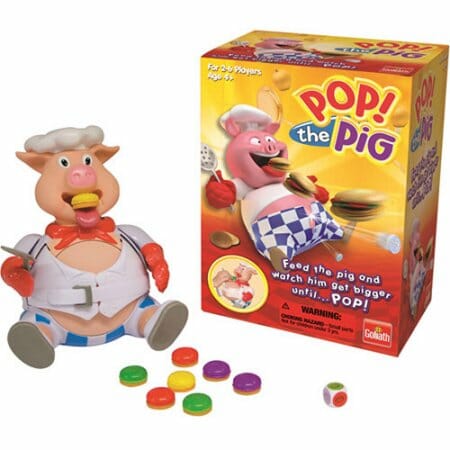
The first time I play a new game with a kiddo, I don’t expect them to start using the language modeled right away – most of the time it takes at least a few turns for them to catch on. When I take my turn during the game, I make sure to model the language that I expect them to use. I use the same wording over and over, because most of my kids learn from repetition.
Any game can be used to work on turn taking. “My” and “your” are confusing because the meaning of the word changes depending on who is saying it. To help clarify this concept for the child, I use hand over hand. I take their hand and point to their chest and say, “my turn,” then have the child repeat the statement. When it is the therapist’s turn, I take their hand and point to the therapist and say, “your turn.” Eventually he will catch on to the fact that you use “my turn” when talking about himself and “your turn” when they are talking about the therapist (or another partner).
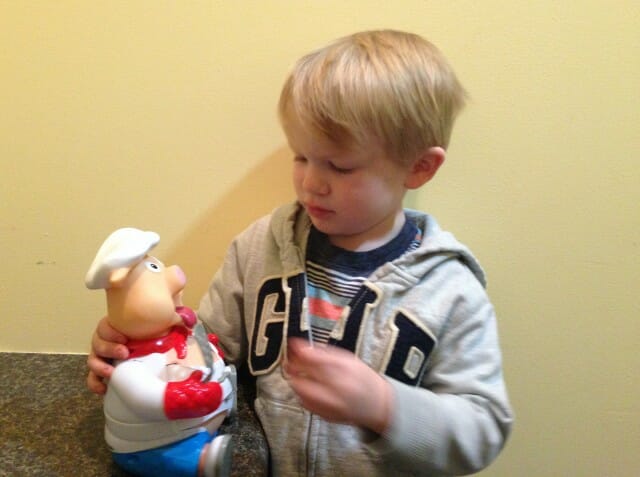
My friend and I are working on verbs. The verbs we were able to use consistently use during the game were roll, push, eat, and pop.
Depending on the level of communication the child possesses, you may choose different sentence structures. You may opt for one word utterances or four to five word utterances – just choose what is appropriate for the child.
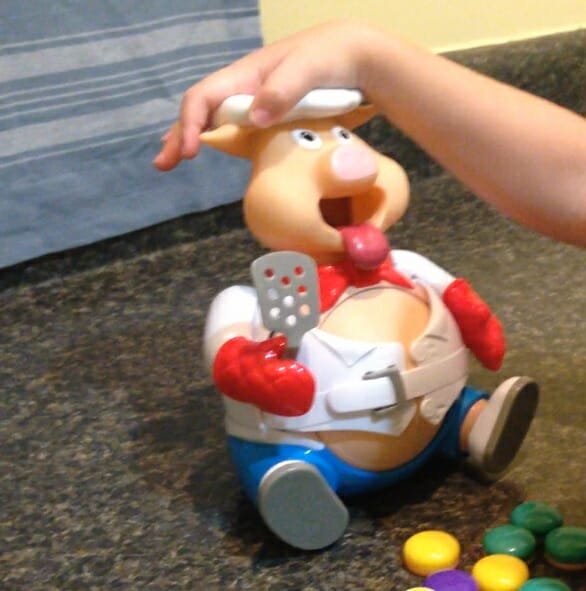
For push you can use many different sentence structures: push, I push, push pig, push the pig, I push pig, I push pig’s head.
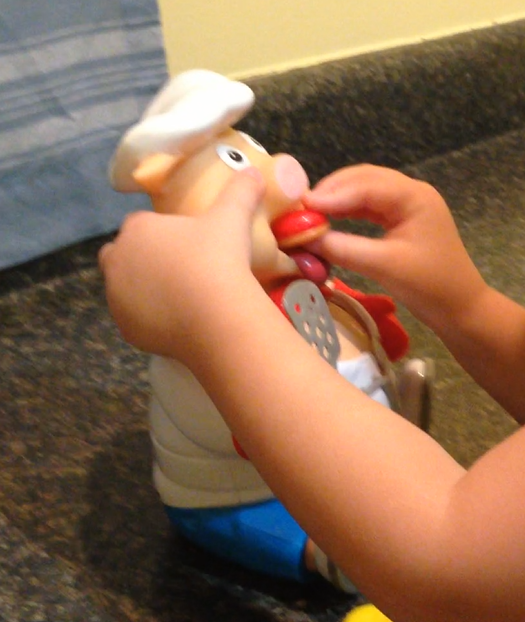
For eat you can use many different sentence structures: eat, eat pig, pig eat, eat burger, pig eat burger, pig eat red burger
This game is great for sequencing events: What do you do first? Then what do you do? Asking questions like these works on their ability to recall information and correctly sequence the steps to the activity.
This game also works by prompting the child to answer questions: Where do you push? Where do you put the burger? What does he eat? What color did you get? What number did you get? How many times do you push his head? What’s happening to his belly?
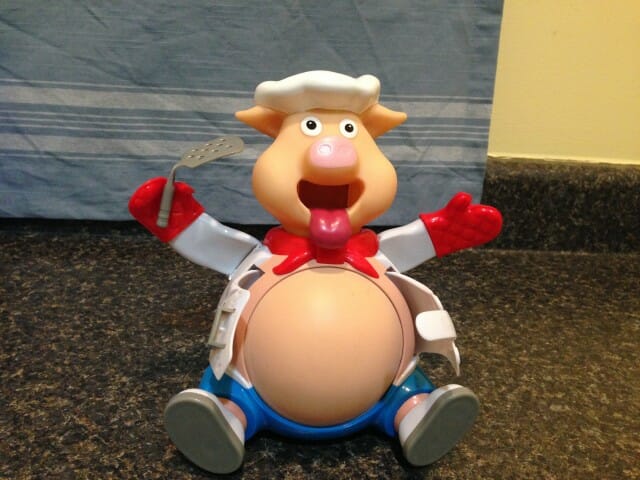
You can identify or label body parts: head, arms, mouth, tongue, ears, feet, eyes. You can identify or label clothing: shirt, pants, hat, mittens.
You can work on descriptive words as well. You can identify or label the colors of the burgers. You can talk about his belly getting bigger with the more that he eats and when his belly gets small at the end of the game.
You can use the game to work on ordinal concepts (first, second, third, etc) or positional concepts (beginning, middle, end/last). If extra help is needed, you can use strips of paper to indicate order or position.
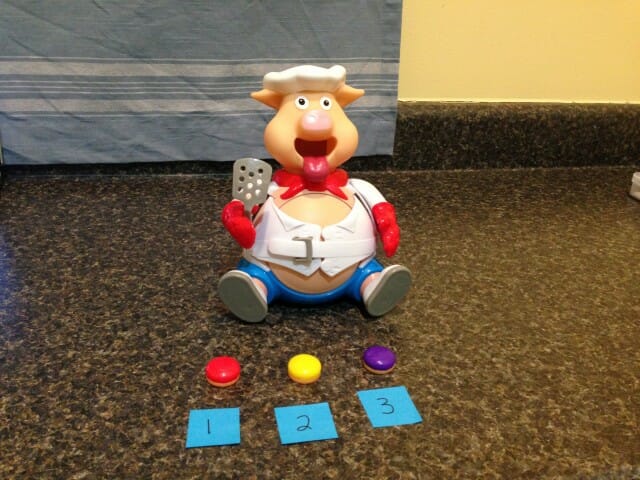
My friend has difficulty remembering that first goes with number one, second goes with number 2, and third goes with number 3. That is what the numbers are for. Eventually the numbers will be removed. The same concept can be used for working on beginning, middle, and end.
There are probably a million different ways you can use this game. The more you use the game, the more things you will discover that you can do with it. It doesn’t matter if you do not follow the “rules.” Sometimes making up your own rules help make the game more fun.
Be on the lookout in the coming weeks for a video of this language game in action!
Jessie Nelson Willis, M.Ed., CCC-SLP







